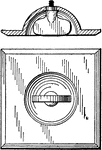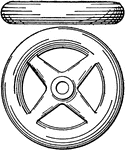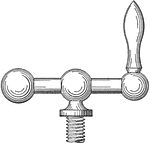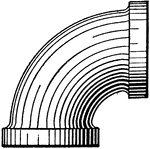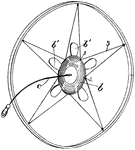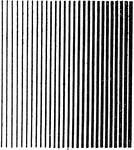
Line Shading Light to Dark Tint
An exercise in creating a line shading, where the line is becoming thicker. The pen is slightly changed…
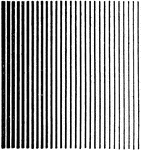
Line Shading Dark to Light Tint
An illustration of creating a line shading from dark to light. The lines are gradually become thin.…

Line Shading Application
"Illustrating the rule that an inclined illuminated surface is lightest nearest the eye and an inclined…

Cylinder Line Shading
An example of the cylinder shaded by lines. The area without lines are where the light hit the cylinder.…

Series of Cylinder Line Shading
"A row of cylinders of different sizes. The effect of polish is given by leaving several brilliant lines,…

Different Cone Shading
"A conical surface may be shaded by driving a fine needle at the apex and swinging a triangle about…
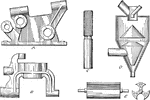
Shaded Single Curved Surfaces
An application of line shading for curved surfaces used in mechanical drawing. The surfaces are shaded…
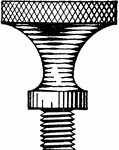
Thumb Screw Shading
A thumb screw shading illustrating a double curved surface line shading technique.

Transparent Drawing Board
A device used to transfer drawing onto opaque paper using bright tin, two showcase lamps, and plate…
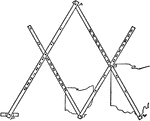
Pantograph
A simple pantograph used to reducing or enlarging images by using a pivot while drawing the larger image.

Suspended Pantograph
An illustration of a suspended pantograph has metal arms to resize images accurately in engineering…

Enlargement of Image by Squares
An illustration of enlarging an image by using squares. This proportion method is done by using squares…

Temporary Adjustment T-square
T—squares can be temporarily adjusted by putting the thumb tack in the head as illustrated. This…
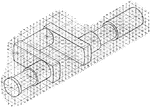
Isometric Sketch
An illustration of an isometric sketch to show a three dimensional object. The sketch is useful in elevation…
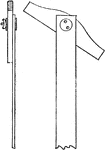
Taper Head Adjustable T Square Side and Front View
"Where the head is movable, the pivot should be quit large, and the hole in which it plays be bushed…

Fixed Rectangular Head T Square
A front and side view of a t square with rectangular head. The t square is used draw straight lines…
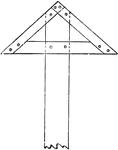
Fixed Triangular Head T Square
"To enable the drawing of long parallel, the head must have been a long contact surface with the edge…
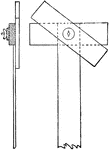
Adjustable Rectangular Head T Square
"Where the square has a fast and a loose head, the blade should be mortised into the fixed one and the…
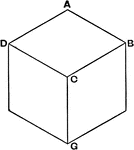
Axonometric Projection of a Cube
An illustration of Axonometric Projection, or object related by plane of projection, of a cube. The…
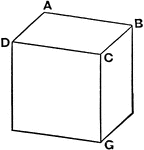
Axonometric Projection of a Rectangular Cube
"The axes or edges, CG and CD, are foreshortened a like amount, while CB is foreshortened twice that…
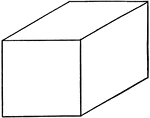
Oblique Projection of a Rectangular Cube
A rectangular cube drawn by using oblique projection. The original cube was projected parallel at a…
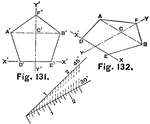
Pentagon Elevation and Projection Scaling
"DE being chosen as an isometric line or axis, a second axis, YY, is drawn isometrically perpendicular…

Isometric Drawing of Circle using Square
The illustration of constructing a circle or ellipse using isometric drawing. The inscribed circle is…

Measuring Angles in Isometric Planes
The illustration showing angles of 15, 30, and 45 degrees at angles 45 and 30 degrees. Measurement of…

Side View of Oblique Timber Framed in to Horizontal Timber
The illustration of the side view of the oblique timber inserted into the horizontal timber. The drawing…

Isometric View of Oblique Timber Framed in to Horizontal Timber
A isometric drawing of the oblique and horizontal wood combined together. The image is drawn by creating…

Drawing Irregular Isometric Curves of Solid
The illustration of an irregular curves for solid. The isometric projection of the curve can be drawn…

Development of Cylinder
A rolled out, or development, of the cylinder. The development is created by drawing the top curve with…

Development of Cone
A development, or rolled out, cone where the point A is the meeting point for the sides. The development…
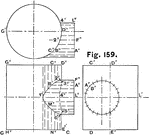
Three Views of Two Intersecting Cylinder
An illustration of two intersecting cylinders viewed from the side, top, and side of the intersecting…
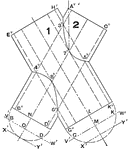
Drawing Auxiliary Planes of Two Intersecting Cylinder
Auxiliary planes of two intersecting cylinder is drawn by drawing the first cylinder. Revolve the first…

Sliced View of Auxiliary Planes of Two Intersecting Cylinder
A sliced view at point VW, shown in the top figure. The inside view of the cylinders shows the points…
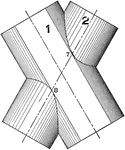
Outside View of Auxiliary Planes of Two Intersecting Cylinder
An outside view of two cylinders intersecting in an auxiliary plane. The dotted lines is the center…
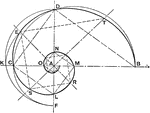
Drawing Equiangular or Logarithmic Spiral
"If B and C are points in the spiral and the ratio of AC to AB be given, the intermediate point D may…

Involute Spiral
"This class of spirals may be generated by unwinding a perfectly flexible but inextensible chord from…
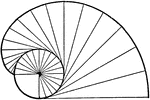
Helix Spiral
A helix spiral generated by revolving about an axis at an angle less than 90 degrees. This generates…
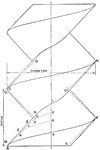
Drawing Screw Thread
The illustration detailing of a screw thread. Threads are created by drawing a cylindrical shape at…
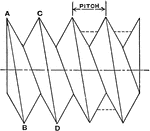
Conventional V Thread Screw
An illustration of the V thread screw. The screw is drawn by connecting the two opposite points of the…
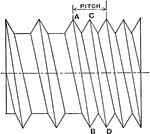
Double Thread Screw
A double thread screw drawn by drawing diagonal lines in between the pitch. The double thread screw…
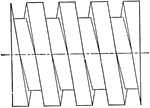
Square Thread Screw
A close up of a square thread on a screw. This representation shows the correct an accurate three dimensional…
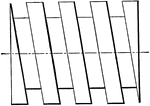
Square Thread Screw Mechanical Drawing Representation
Illustration of a common representation for square thread screw. The screw is drawn in two dimensions…

Diagram of Square Thread Nut and Screw
A representation of the square threaded nut and screw. The left image shows the threaded screw with…

Diagram of Square Thread Nut and Screw
A representation of the square threaded nut and screw. The left image shows the threaded screw with…
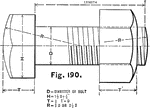
U.S. Standard Hexagonal Bolt Head
An illustration of the hexagonal bolt head showing measurements. The measurement of diameter, D, is…

Diagram of Screw Head
A screw head with detailed measurements for accurate drawing. These measurements are based off the diameter…
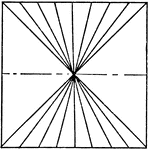
Vanishing Point Using Lines
An exercise problem to create a vanishing point using lines. The line is drawn by placing a dot into…
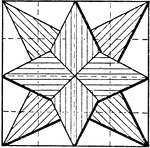
Constructing Star Using Pentagons
An illustration of drawing an eight point star using a series of pentagons to create a star. The paper…
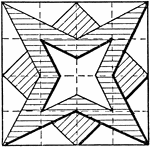
Constructing Stars Using Different Shapes
"Divide the square as indicated by the dotted lines, drawing these as full lines in pencil, but do not…
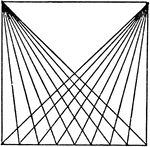
Drawing Diagonal Lines with T Squares and Triangle
"Use the T square and 45 degree triangle to divide the square as indicated, the size of the small squares…
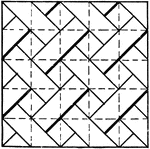
Drawing Exercise for Drawing Diagonal Line Pattern using T Square and Triangle
A diagonal line pattern drawing exercise in for T square and triangle. The image is constructed by dividing…
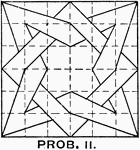
Constructing Star and Box Overlap Pattern using T Square and Triangle
The construction of a star with square overlapping each other using a triangle and T square. This image…
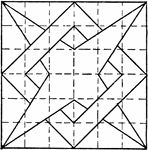
Constructing 4 Point Star Overlapping Box Pattern using T Square and Triangle
A problem exercise to construct a star overlapping square using a triangle and T square. The image is…

Horizontal Solid Line Drawing Exercise
An exercise problem drawing a series of horizontal lines using a straight edge or triangle without using…

Horizontal Solid and Dashed Line Drawing Exercise
An exercise for mechanical drawing to construct a series of horizontal lines. The solid lines are drawn…

